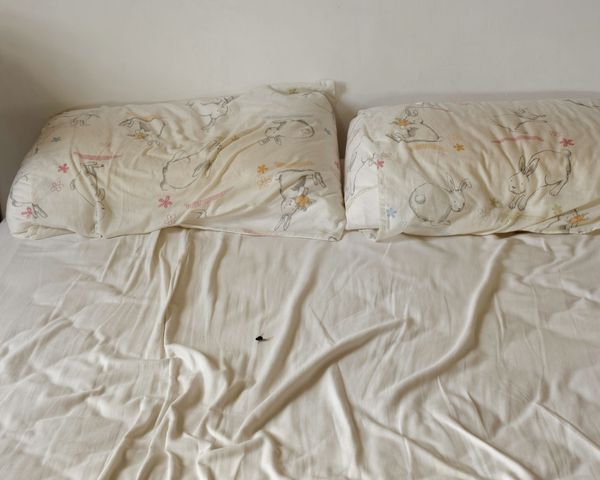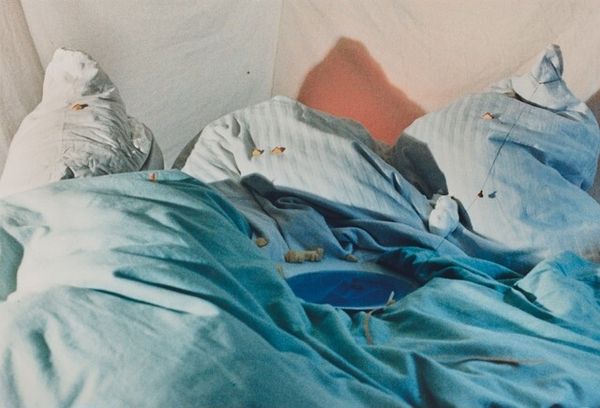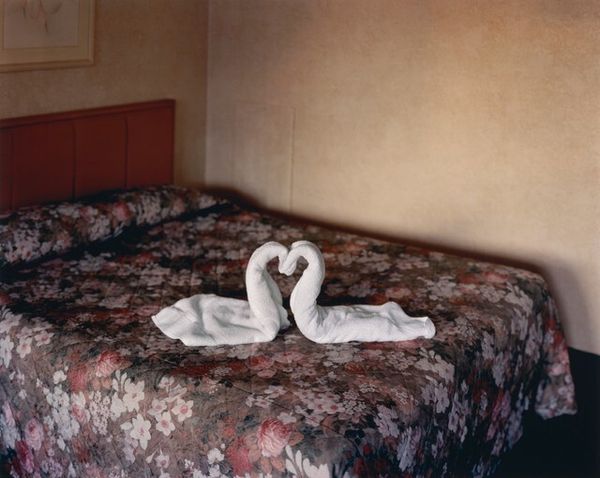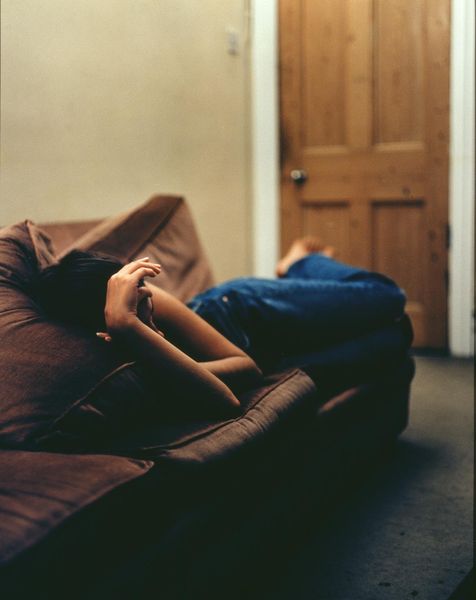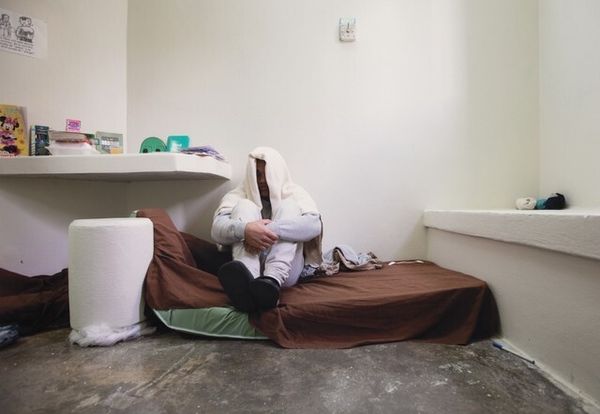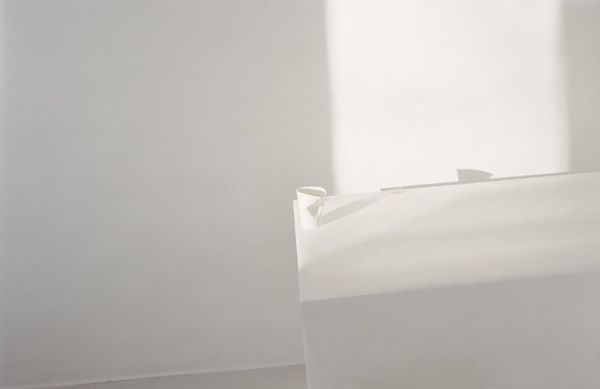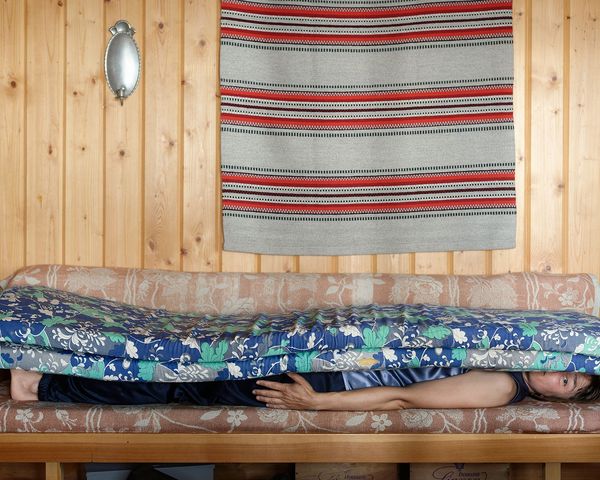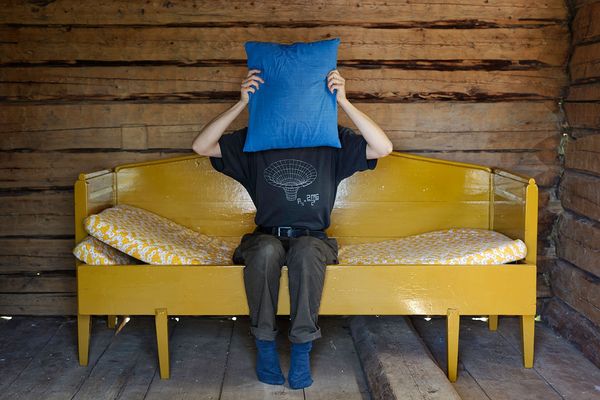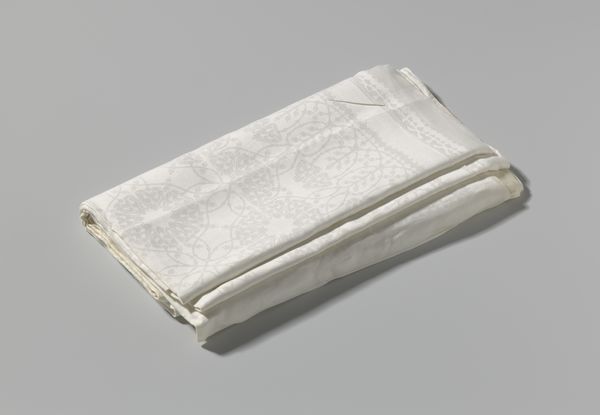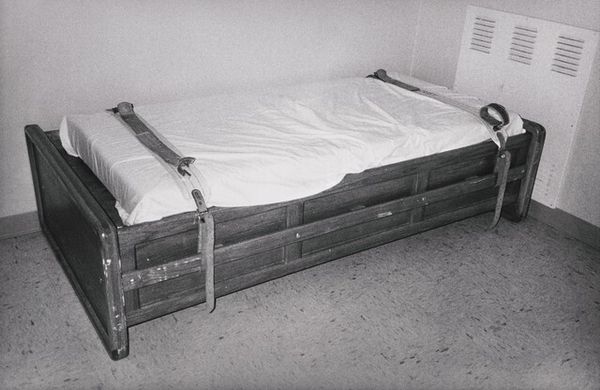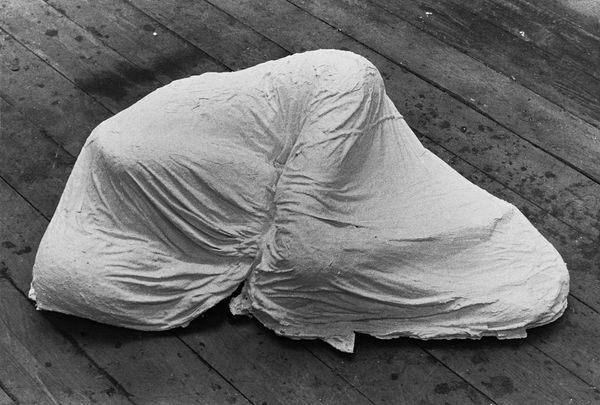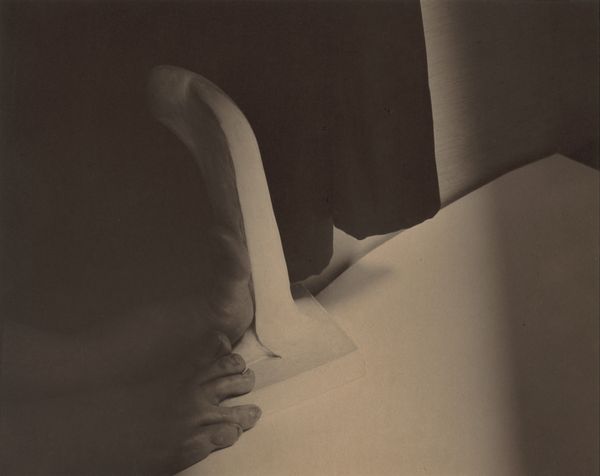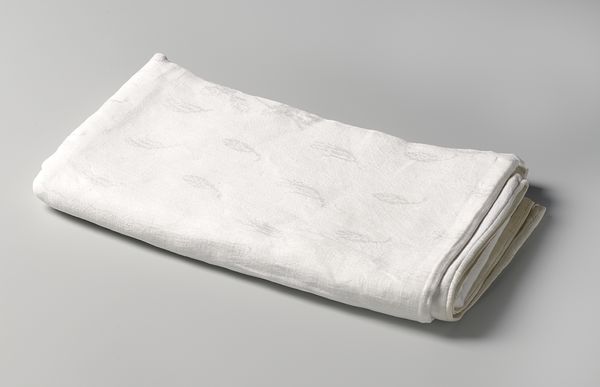
Dimensions: image: 24 × 27.8 cm (9 7/16 × 10 15/16 in.) sheet: 32.9 × 35.4 cm (12 15/16 × 13 15/16 in.)
Copyright: National Gallery of Art: CC0 1.0
Curator: Right, let’s dive into Inbal Abergil’s “Cortes” from 2014. It’s a photograph, though it uses elements of collage and textile. My first thought? It kind of swallows you. Editor: I feel that, I immediately see a sense of suffocation, perhaps. There's this pillow, but instead of offering comfort, it’s…concealing, engulfing something inside. I'm thinking about ideas of domesticity and how they can become prisons for some. Curator: It’s got this strangely domestic, unsettling energy, doesn’t it? A mundane, even comforting object--a pillow, a t-shirt--arranged to create something…other. Like a distorted still life, maybe. There is something sculptural about it, the way it's shaped. Editor: Precisely! The intimacy of a bedroom scene combined with what almost seems like violence. I think about the unsaid, the unseen labor, often gendered, that goes into maintaining this image of domestic tranquility. The textiles point to the physical toll—all that washing, ironing, folding. But more than that, perhaps what's folded in it represents the weight of expectations placed on women. Curator: Yeah, that sense of something being concealed, maybe even repressed…like that blue t-shirt crammed inside the pillow. I also wonder about ideas of fragility. How these familiar things can break apart or feel loaded in different contexts. Like sleep disturbed by unspoken tensions, or the bedroom no longer as a safe haven but rather an arena for anxiety. Editor: Definitely. And photography captures a specific moment, freezes it, offering space for analysis. Abergil uses the medium to almost make tangible these anxieties, materializing them in such an unconventional way, contrasting the expected calmness of photographic elements with a complex meaning that is politically charged and socially incisive. It reminds us that the personal is always political, especially when rendered as portraiture that deviates from established canons. Curator: So beautifully put! For me, “Cortes” whispers about secrets and uncomfortable truths lurking beneath seemingly peaceful surfaces. The beauty is that each observer could project onto it based on their own experience. Editor: Absolutely, and that’s why art, even when unsettling, is necessary, opening doors for important conversations that disrupt assumptions, and shed light on complexities of womanhood that resonate deeply.
Comments
No comments
Be the first to comment and join the conversation on the ultimate creative platform.
